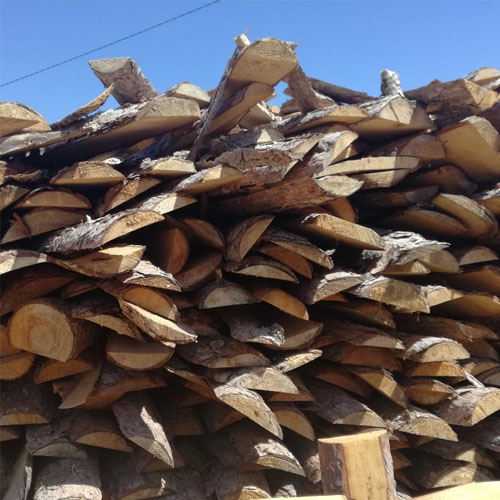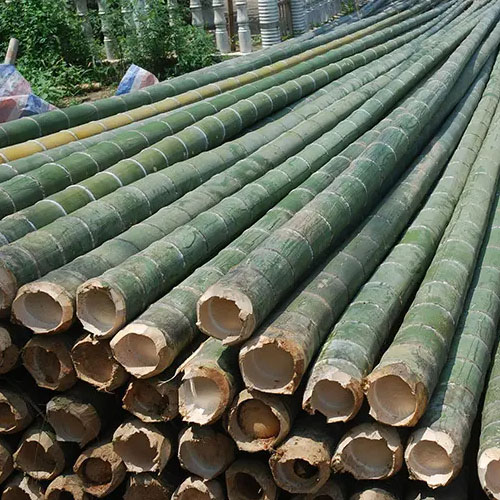What is a wood peeling machine
288Its main function is to peel off the bark of wood to improve the subsequent processing efficiency and quality of wood.
View detailsSearch the whole station Products
Wood chipper is a key equipment for wood processing and treatment to enhance the value, as it can convert logs, templates, branches, etc. into uniform wood chips. This reduces volume, lowers transportation costs, enables waste utilization (e.g. fuel, bedding), and effectively meets the needs of downstream industries.
Let’s explore the specific ways a wood chipper achieves this transformation across different sectors. As experts at Fude Machinery, specializing in wood processing equipment, we see these applications daily and understand the core value chippers provide.

Got piles of branches after pruning? Hauling away bulky garden waste is a hassle and expense. A wood chipper is indeed a primary tool for tackling this common problem efficiently.
Yes, processing garden waste like branches and shrubs is a main use. It drastically cuts waste volume, saving transport and disposal costs. Chippers excel at wood, less so pure leaves.
Processing garden waste is one of the most visible and widespread uses for wood chippers. Municipalities, landscaping companies, property managers, and homeowners all benefit.
So you’ve chipped the branches. Now what? Don’t just discard the chips as smaller waste! These wood chips are the starting point for turning that garden waste into something genuinely valuable.
Chipped garden waste becomes valuable organic mulch or compost material. Mulch retains moisture, suppresses weeds, and improves soil. As compost, chips add essential carbon and structure.

Instead of being a final disposal step, chipping is often the first step in upcycling garden waste. The resulting chips have several beneficial uses, primarily in landscaping and soil health.
Applying wood chips as organic mulch is extremely common:
Wood chips are excellent “brown material” for composting:
| Use | Key Function | Benefit |
|---|---|---|
| Mulch | Covers soil surface | Retains moisture, suppresses weeds, looks good |
| Compost | Mixed into compost pile | Provides carbon, improves aeration |
Chipping transforms bulky branches into a resource that improves garden health and sustainability.
Biomass energy needs consistent, usable fuel. Raw logs, forestry waste, or large wood chunks won’t work directly in most boilers or gasifiers. A wood chipper plays a critical pre-treatment role.
It’s a key front-end machine. Chippers process raw wood into uniform fuel chips required by biomass boilers and power plants for stable feeding, complete combustion, and efficient operation.

The wood chipper acts as the crucial link between raw woody biomass and usable biomass fuel. Without this step, many biomass energy systems cannot function effectively.
The wood chipper is therefore indispensable for preparing raw biomass into a standardized fuel commodity.
Wood processing operations like sawmills and furniture factories inevitably create offcuts, edge trims, and other wood scraps. This potential waste costs money to handle or dispose of. A wood chipper acts as a vital tool for maximizing resource utilization within the factory.
Chippers handle edge trims and waste wood in sawmills and furniture plants. These chips become raw materials for particleboard, fiberboard, paper pulp, or even factory fuel, reducing waste.


Instead of treating processing residues as waste, integrated wood industries use chippers to convert them into valuable co-products or internal resources.
| Handling Option | Description | Outcome |
|---|---|---|
| Disposal | Pay to haul away or landfill | Net cost, waste of resources |
| Chipping for Resale | Process into chips, sell as raw material or fuel | Generates revenue, resource utilization |
| Chipping for Fuel | Process into chips, burn on-site for energy | Reduces factory energy costs, resource utilization |
The chipper enables wood processing plants to operate more sustainably and profitably by closing the loop on their material streams.
Recycling centers and waste management facilities face mountains of discarded wood – old pallets, packaging crates, construction debris, and unwanted furniture. Landfilling this bulky waste is environmentally problematic and costly. A wood chipper is often the crucial first step in recycling this diverse stream.
It’s highly valuable for recycling waste wood like pallets and construction timber. Chipping is the first step, reducing landfill burden and turning waste into usable resources like fuel or materials.

Wood chippers play a pivotal role in the circular economy by enabling the recovery and reuse of post-consumer and post-industrial wood waste.
| Aspect | Benefit of Chipping Waste Wood | Detail |
|---|---|---|
| Environmental | Reduces landfill burden | Less space needed, fewer methane emissions |
| Conserves virgin resources | Replaces need for new wood in some applications | |
| Economic | Creates valuable commodities from waste | Chips can be sold as fuel, material, mulch, etc. |
| Reduces disposal costs | Lower hauling fees compared to bulky waste |
Chipping is essential for unlocking the hidden value in wood waste streams, benefiting both the environment and the economy.
Farms and ranches often generate their own wood waste from managing woodlots, clearing fence lines, or pruning orchards. They also have needs for materials like animal bedding. Managing both can be costly and time-consuming. A wood chipper can serve as a practical multi-tool on the farm.
Yes, farms use chippers for making animal bedding (horses, cows, poultry), adding carbon to compost piles, or even paving muddy paths temporarily.


For agricultural operations, a wood chipper offers several practical applications, helping manage on-site resources and potentially reducing external costs.
| Farm Application | Benefit | Material Source |
|---|---|---|
| Animal Bedding | Cost savings, on-site material production | Clean, non-toxic wood |
| Compost Additive | Improved compost quality, faster decomposition | Branches, wood scraps |
| Path Improvement | Temporary mud control, better traction | General wood chips |
A wood chipper can be a valuable asset for resource management on farms and ranches.
Think wood chips are just for mulch, fuel, or maybe animal bedding? You might be missing some niche but interesting applications. The output from a wood chipper finds its way into some surprising special uses.
Beyond the mainstream applications, wood chips created by chippers serve several specialized purposes, demonstrating their versatility.
| Niche Use | Key Characteristic Utilized | Example Environment |
|---|---|---|
| Trail Surfacing | Softness, natural look, drainage | Parks, nature reserves |
| Erosion Control | Ground cover, slows water flow | Slopes, construction sites |
| Playground (EWF) | Impact absorption, safety certified | Public/private playgrounds |
| Mushroom Growing | Specific wood nutrients/structure | Fungi cultivation farms |
| Food Smoking | Aromatic compounds released during combustion | BBQ, food processing |
These examples further illustrate the diverse value proposition derived from the simple act of chipping wood.
A wood chipper is key. It efficiently turns bulky, irregular wood into uniform, usable chips. This cuts costs, enables resource recovery from waste, meets crucial industry specifications, and boosts overall processing efficiency. It truly adds value across many sectors.
Its main function is to peel off the bark of wood to improve the subsequent processing efficiency and quality of wood.
View detailsWhen selecting and configuring a branch crusher, various factors need to be considered comprehensively.
View detailsWood powder crusher is widely used in various fields such as wood processing, feed production, biomass energy utilization, and paper industry
View detailsCarbonization furnace is an environmentally friendly equipment used to convert organic matter into charcoal
View details
HelloPlease log in